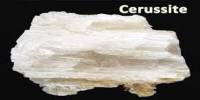A new two-dimensional material has been found for the first time by an international team led by researchers from the University of Bayreuth utilizing cutting-edge high-pressure technologies.
Beryllium and nitrogen atoms are arranged in a regular pattern to create the new substance beryllonitrene. It exhibits a remarkable potential for applications in quantum technology thanks to its peculiar electronic lattice structure. Its synthesis needed a compression pressure that was around a million times greater than the atmosphere’s pressure on Earth.
The journal Physical Review Letters is where the researchers published their discovery. Interest in two-dimensional materials has progressively increased in both science and industry since since the discovery of graphene, a substance composed entirely of carbon atoms.
Researchers from the University of Bayreuth and their worldwide collaborators have now created unique compounds made of nitrogen and beryllium atoms under extraordinarily high pressures of up to 100 gigapascals. These are beryllium polynitrides, some of which follow the monoclinic crystal structure and others the triclinic.
When the pressure is reduced, the triclinic beryllium polynitrides exhibit one peculiar property. They take on a crystal structure made up of layers. Z-shaped nitrogen chains are found in each layer, which are joined by beryllium atoms. Therefore, it can be referred to as a planar structure made of Be₂N₄ pentagons and Be₂N₄ hexagons. Thus, each layer represents a two-dimensional material, beryllonitrene.
However, there is no possibility of devising a process for the production of beryllonitrene on an industrial scale as long as extremely high pressures, such as can only be generated in the research laboratory, are required for this. Nevertheless, it is highly significant that the new compound was created during decompression and that it can exist under ambient conditions. In principle, we cannot rule out that one day it will be possible to reproduce beryllonitrene or a similar 2D material with technically less complex processes and use it industrially. With our study, we have opened up new prospects for high-pressure research in the development of technologically promising 2D materials that may surpass graphene.
Professor Dr. Leonid Dubrovinsky
Beryllonitrene is a novel 2D substance in terms of quality. In contrast to graphene, beryllonitrene has a two-dimensional crystal structure, which results in a slightly warped electronic lattice. If beryllonitrene could ever be synthesized on an industrial scale, it would be perfectly suited for uses in quantum technology due to its consequent electrical characteristics.
The purpose of this still-emerging area of study and research is to apply the properties and structures of matter as they relate to quantum mechanics to technological advancements, such as the development of high-performance computers or new methods of secure communication through encryption.
“For the first time, close international cooperation in high-pressure research has now succeeded in producing a chemical compound in that was previously completely unknown. This compound could serve as a precursor for a 2D material with unique electronic properties. The fascinating achievement was only possible with the help of a laboratory-generated compression pressure almost a million times greater than the pressure of the Earth’s atmosphere. Our study thus once again proves the extraordinary potential of high-pressure research in materials science,” says co-author Prof. Dr. Natalia Dubrovinskaia from the Laboratory for Crystallography at the University of Bayreuth.
“However, there is no possibility of devising a process for the production of beryllonitrene on an industrial scale as long as extremely high pressures, such as can only be generated in the research laboratory, are required for this. Nevertheless, it is highly significant that the new compound was created during decompression and that it can exist under ambient conditions. In principle, we cannot rule out that one day it will be possible to reproduce beryllonitrene or a similar 2D material with technically less complex processes and use it industrially. With our study, we have opened up new prospects for high-pressure research in the development of technologically promising 2D materials that may surpass graphene,” says corresponding author Prof. Dr. Leonid Dubrovinsky from the Bavarian Research Institute of Experimental Geochemistry & Geophysics at the University of Bayreuth.
















